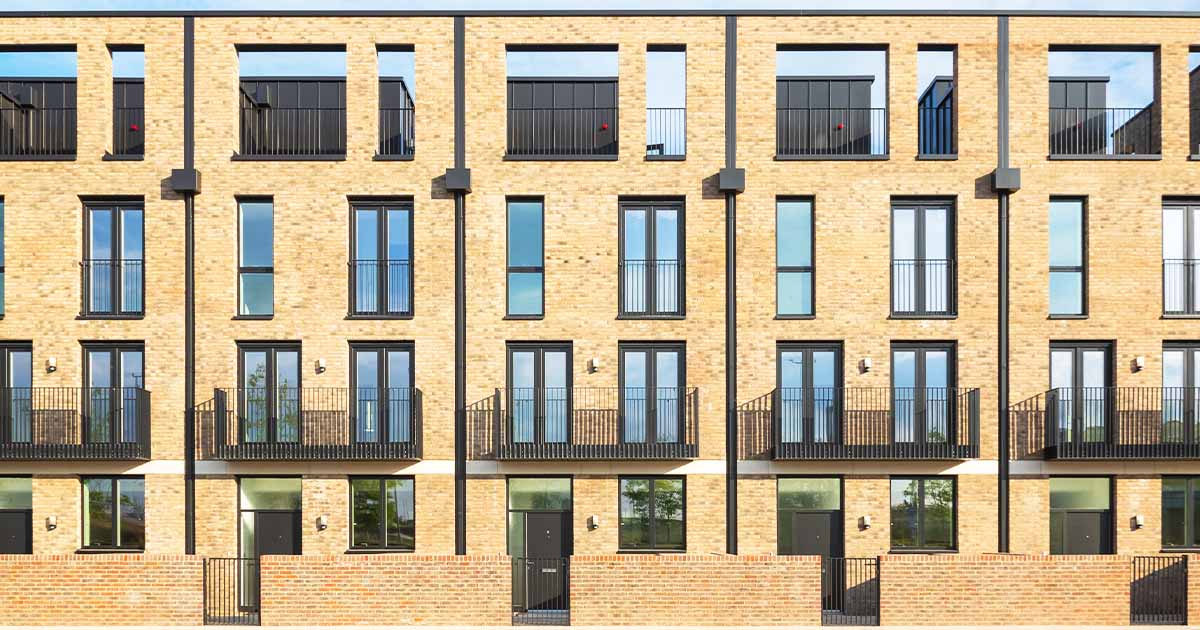Government Introduces New Permitted Development Rights

As the independent review into residential properties built under existing permitted development rights is published, the government has introduced three new statutory instruments (coming into effect in September 2020) further amending both permitted development rights and the use class system, to ‘deliver much-needed new homes and revitalise town centres.’
1. Demolition of buildings and construction of new homes
A new Class ZA Permitted Development Right has been introduced, for the demolition of the buildings listed below and replacement by either a single purpose built detached block of flats, or a purpose-built detached house.
- A single purpose-built detached block of flats, and
- Any single detached building established for:
- Office use within Class B1(a);
- Research and development within Class B1(b); or
- Industrial process within Class B1(c).
There are a number of restrictions on this right and of particular note, where the above Class ZA development will not apply, are the following:
- If the old building was constructed after 31 December 1989;
- If the building is listed;
- If the footprint of the building exceeds 1,000 square meters; and
- Unless the old building has been vacant for at least 6 months immediately prior to the application for prior approval.
Any developer must apply to the local planning authority for prior approval with an extensive range of factors open for consideration including the design of the building, its external appearance, impact on the neighbouring amenity and notably, the provision of adequate natural light in all habitable rooms of each new house/flat.
2. Additional storeys to homes
Home-owners will now be entitled to increase the size of their homes by adding:
- Up to two additional storeys, where the existing house consists of two or more storeys; or
- One additional storey, where the existing house consists of only one storey.
Again, there are a large number of restrictions on the operation of this right including the following:
- The house was constructed before 1 July 1948 or after 28 October 2018;
- Additional storeys have already been added to the original house, whether by operation of this right or otherwise;
- Following the development, the height of the highest part of the roof does not exceed 18 metres.
Any development will need to comply with a number of conditions, an example is the external materials used must be similar to those in existence and that it must not include a window in any wall or part of the roof on a side elevation of the house. An application for prior approval is necessary and can be refused by the local planning authority on the basis that the development does not comply with the extensive restrictions and conditions set out in the legislation.
This is in addition to legislative amendments introduced last month, permitting blocks of flats with at least three storeys to be extended upwards by an additional two storeys (subject to a range of detailed restrictions on both the location and age of the building, as well as the extensions itself).
These new rights have been criticised for not fast-tracking the planning process, on the basis of the very extensive grounds for refusal in the prior approval process. Concerns have also been raised that these rights will create poor standards of residential development which do not accommodate wellbeing and quality of life, leading to communities which are less attractive to business and to residents, at a time in which regeneration of town centres has hit the headlines.
This is a particularly relevant point in light of the independent report into permitted development built housing published this week.
Review of Permitted Development Housing
The independent report highlighted its findings into the difference in residential accommodation constructed pursuant to permitted development rights, against those subject to full planning permission. In some areas, there was found to be minimal or ‘no obvious differences’ between the categories of housing, for example in relation to open space and provision of parking.
However, the report makes it very clear that in some areas of comparison there is a ‘much more significant difference between schemes created through planning permission and those created through permitted development”. A particularly stark contrast is in relation to whether the units met the national described space standards, of which only 22.1% of units created through PD met compared to 73.4% created through full planning permission.
Whilst provision has been made in the prior approval process of the new legislation discussed above, that each residential unit has adequate natural light, this is a minimum level of protection when considered against the concerns which this report publishes. If the operation of these new rights leads to an intensification of housing which is located in commercial areas, with the consequential loss of business space, it is unclear how the concerns raised by this report will be eased.
It therefore remains to be seen to what extent the residential units created by the new permitted development rights will accommodate the findings of this report. Given that the government’s message is ‘Project Speed’ and as discussed in my colleague’s recent blog, it seems likely timescales will prevail over quality. We also query whether this is the right way to deliver new housing as the residential units created under permitted development rights will not attract Community Infrastructure Levy or provide affordable housing. This will therefore not address the country’s ever increasing affordable housing shortfall or fund much needed infrastructure. Surely a better way to get the country building again would be to properly fund local planning authorities? We are not alone in voicing concerns over these proposals with RIBA, the RTPI, RICS and 22 London Boroughs all writing to the Secretary of State urging him to reconsider these latest measures.
Sophie is an Associate in the Planning team.
Changes to the Use Classes Order in England
The Town and Country Planning (Use Classes) (Amendment) (England) Regulations 2020 (SI 2020 No.757) were introduced by the government on 20 July, and take effect on 1 September 2020. The new Regulations make radical changes to the 1987 Use Classes Order. These changes sit alongside the recent additions to permitted development rights, forming part of the government’s “Project Speed”, with the aim being to support the high street revival and allow greater flexibility to change uses within town centres without the need for express planning permission.





